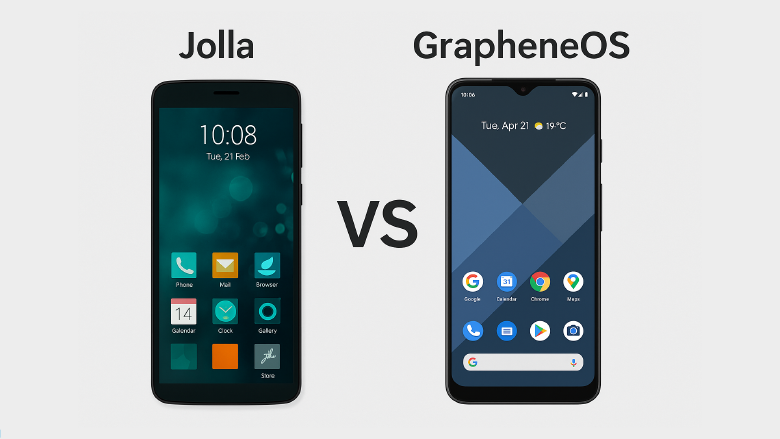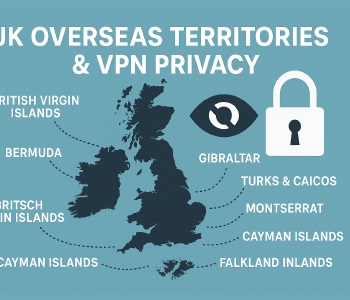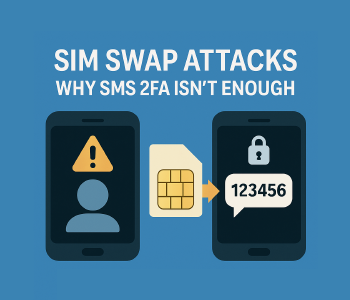
Jolla Phone vs. GrapheneOS: Two Different Roads to Privacy
If you want a phone that puts privacy first, you don’t have to settle for Apple vs. Google. Two alternative paths stand out: Jolla’s Sailfish OS (built for Jolla phones and some supported devices) and GrapheneOS (a hardened version of Android for Google Pixel phones).
Both promise more control and less tracking. But they take very different routes — and which one works for you depends on what you value most.
Quick Background
-
Jolla & Sailfish OS
Born in Finland from ex-Nokia engineers, Sailfish OS is a Linux-based mobile system with a unique gesture-driven UI. It’s pitched as a sovereign, European alternative with an emphasis on independence from U.S. tech giants. -
**GrapheneOS **
An open-source Android fork that runs only on Google Pixel devices. It strips away Google services by default, adds strong sandboxing, exploit mitigation, and hardened memory protections, making it one of the most secure consumer OSes available today.
Security: Different Philosophies
GrapheneOS is laser-focused on technical hardening. Its core features include:
- Hardened libc, kernel, and memory allocator to reduce exploitability
- Stricter app permissions and per-app network toggles
- Verified boot with strong rollback protection
- Sandboxed Google Play (optional) so you can run Play apps without giving Google full system access
Result: one of the strongest mobile OS setups against real-world attacks.
Sailfish OS (Jolla) focuses more on data sovereignty and independence:
- Built on open-source Linux foundations, with proprietary UI components
- Smaller attack surface compared to mainstream Android/ iOS
- Regular security updates, though not at the pace of GrapheneOS
- Can run Android apps in a compatibility layer (Alien Dalvik) — but that introduces more attack vectors
Result: good baseline privacy, but less hardened than GrapheneOS.
Privacy: Big Tech vs. Independence
- GrapheneOS: Designed to de-Google Android. You can add sandboxed Play Services if you need them, but otherwise you’re free from Google’s usual data collection. However, since it only runs on Pixel phones, you’re still tied to Google hardware.
- Sailfish OS: Marketed as a European alternative — no Google baked in, no iCloud/AppleID either. But to get popular apps, you’ll likely end up using the Android compatibility layer, which can pull you back into Google’s orbit.
Usability: Everyday Life Matters
- GrapheneOS: Looks and feels like standard Android. If you’ve used a Pixel before, the transition is smooth. App support is strong — either through F-Droid, Aurora Store, or sandboxed Play.
- Sailfish OS: Offers a very different, swipe-based UI. Some love its clean, minimal feel; others find it unfamiliar. Native app ecosystem is small, so you’ll rely on Android compatibility for banking, messaging, or social apps.
Ecosystem & Updates
- GrapheneOS: Maintained by a dedicated non-profit team. Monthly updates, often faster than stock Android, with a reputation for serious security focus.
- Sailfish OS: Developed by Jolla, with a mix of community and corporate support (e.g., Russian and Chinese deployments in the past). Updates are steady but not as frequent or security-hardened as GrapheneOS patches.
Who Each Option Fits
Choose GrapheneOS if…
- Security hardening is your #1 priority
- You’re comfortable flashing a Pixel device
- You want Android app compatibility without Google tracking you
- You like the idea of open-source oversight and quick updates
Choose Sailfish OS if…
- You want a non-U.S., non-Google mobile ecosystem
- You’re curious about Linux-based phones and gesture-driven UI
- You can live with a smaller app ecosystem (or don’t mind running Android apps inside a compatibility layer)
- You care more about digital independence than cutting-edge exploit protection
Final Thought: Two Different Paths, Same Goal
GrapheneOS and Sailfish OS share the same vision: more control, less surveillance. But they aim at it differently.
- GrapheneOS is the security engineer’s choice: hardened, open-source, Android-compatible.
- Jolla’s Sailfish OS is the sovereignty advocate’s choice: non-U.S., Linux-based, with a unique identity.
Neither is “perfect privacy.” Both come with trade-offs in usability, app access, or hardware choices. But if you’re serious about stepping outside the Apple/Google duopoly, these are two of the most credible ways to do it.






